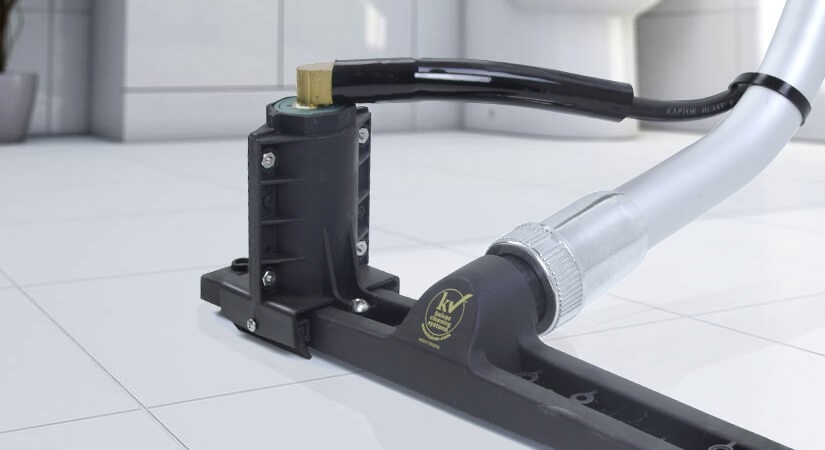First impressions often dictate our perception of professionalism and quality of a business. If you walk into the lobby of a company and the floors are clean and shiny, you will probably make the assumption that the building is clean and healthy, and begin to form a positive opinion of the organization. Regardless of the actual cleanliness of the building, that first glimpse of a well-kept floor has influenced your judgement of the business as a whole. Therefore, it only makes sense for a company to focus on the appearance of their lobby and restroom floors to take advantage of the possible influence gained.
The most common deal breaker in this pursuit is the color of the grout lines. Since grout is a porous substance, it does not take long for moisture and soils to embed into the grout. The fact that most grout is light in color means that these embedded substances quickly alter the appearance of grout lines, making them look streaky and discolored. This quickly effects the first impression of potential customers entering your building. If the facility is properly maintained it is possible to keep the grout its’ natural color as long as you know how to approach it.
The first step is to identify the nature of the soil that has adhered to the grout. This will determine the type of chemical used to restore the grout’s image. The location of the floor in the building will be your first indicator. General areas such as lobbies and hallways will usually attract good old dirt. This can change slightly in moist climates or during the winter when melting snow and ice are tracked in, but generally speaking you are dealing with standard soil brought in from the outside. This type of soil can be reduced greatly by the proper use of entrance matting. In order to remove outside dirt from grout lines you will need an alkaline based chemical such as Platoon GP or KaiO. Since soil is acidic in nature, the alkalinity from these cleaners will break down the built up sediment, making it easy to rinse away, leaving the grout appearing as it was intended. Like most chemicals, it will take roughly ten minutes of dwell time for the product to penetrate and break down the soil. For larger or higher traffic areas it is imperative to use a piece of equipment such as a KaiVac No Touch Cleaning System to speed up and streamline the process by adding high water pressure to loosen the dirt and a wet/dry vacuum to remove the loosened soil and to leave the floor dry without the need for mopping by hand.
In kitchens or restrooms, we can usually assume that the buildup in the grout is from minerals in the water that has been splashed from sinks and toilets. Over time the trace amounts of minerals will adhere to the porous grout and will eventually accumulate to alter the grout’s appearance. In this instance, you will need an acidic chemical like PLSR or KaiBlooey to dissolve and break up the mineral deposits. As in the above example, it is important to allow the chemical to work by applying it liberally and giving it at least ten minutes to dislodge the lime, rust and scale from the cement grout. Also like the first example, a piece of equipment will make this process much quicker and effective.
If these areas are maintained regularly with the correct products and techniques as outlined above, you can keep your grout looking like new and take advantage of the positive first impressions. If you aren’t certain of the nature of the soil you can purchase pH tape from a hardware or pool supply store and put a drop of distilled water on the grout in question. Once the tape is applied to the moistened area it will change color indicating the pH of the surface based on the color key provided. It is important to use distilled water for this process so impurities in the water do not interfere with the pH reading of the grout. By implementing these strategies and techniques you can easily gain positive influence with customers before they even interact with an employee. The rest is up to you.

